
Digital Marketing Blogs
"Let's Learn, Explore, and Connect to the World"

YouTube Analytics & Audience Insights: Understanding Viewer Demographics and Engagement Patterns
- Jenelie Hijosa
- Digital Marketing (Digital Business)

Introduction

YouTube has evolved into a critical platform for digital marketing, offering brands and content creators unparalleled access to a global audience. With over two billion monthly active users, understanding who watches your content and how they engage with it is crucial for driving growth and maximizing impact. By leveraging YouTube Analytics, marketers can gain deep insights into viewer demographics and engagement patterns, enabling them to tailor their content strategy for optimal results.
In this blog, we’ll explore the essentials of YouTube Analytics, from accessing and interpreting key metrics to understanding viewer demographics and engagement patterns. We’ll explore how these insights can shape your content strategy, boosting your ability to engage with your audience and meet your marketing objectives.
Understanding YouTube Analytics
 YouTube Analytics is a robust resource that offers detailed information about the performance of your channel. This tool helps creators understand how their content is performing, who their viewers are, and how they can optimize their strategy to achieve better results.
YouTube Analytics is a robust resource that offers detailed information about the performance of your channel. This tool helps creators understand how their content is performing, who their viewers are, and how they can optimize their strategy to achieve better results.
Overview of YouTube Analytics Tool
 YouTube Analytics provides an abundance of data to help you make well-informed decisions about your content. It includes metrics on views, watch time, audience retention, demographics, engagement, and more. This information is essential for identifying what is effective and what is not, enabling you to modify your strategy accordingly.
YouTube Analytics provides an abundance of data to help you make well-informed decisions about your content. It includes metrics on views, watch time, audience retention, demographics, engagement, and more. This information is essential for identifying what is effective and what is not, enabling you to modify your strategy accordingly.
Key Metrics to Monitor
1. Views: The total number of times your video has been watched. This is a basic metric that indicates the popularity of your content.
2. Watch Time: The overall duration that viewers have spent watching your videos. Increased watch time indicates that your content is captivating and maintains the audience’s interest.
3. Audience Retention: This shows how well your video is retaining viewers over its duration. It can highlight which parts of your video are most engaging or where viewers tend to drop off.
4. Engagement Metrics: These include likes, comments, shares, and subscribes, which indicate how viewers are interacting with your content.
5. Demographics: Information about your viewers’ age, gender, location, and device type.
How to Access and Navigate YouTube Analytics
To access YouTube Analytics, follow these steps:
1. Log in to YouTube Studio: This is the control center for your YouTube channel.
2. Navigate to the Analytics Section: On the left-hand menu, click on “Analytics.” This will open the main analytics dashboard.
3. Explore Different Tabs: The dashboard is divided into several tabs such as Overview, Reach, Engagement, Audience, and Revenue. Each tab provides different sets of data.
4. Customize Your View: Use filters and date ranges to drill down into specific metrics or time periods that are relevant to your analysis.
Practical Examples of Data Utilization
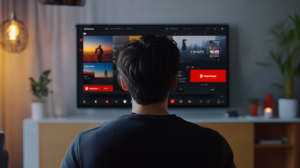 Consider a YouTuber who notices a drop in audience retention at a particular point in their videos. By examining the content at that timestamp, they might discover that viewers are losing interest during lengthy intros. Adjusting the video structure to have shorter intros and more engaging content at the beginning can improve retention rates.
Consider a YouTuber who notices a drop in audience retention at a particular point in their videos. By examining the content at that timestamp, they might discover that viewers are losing interest during lengthy intros. Adjusting the video structure to have shorter intros and more engaging content at the beginning can improve retention rates.
Another example is using the engagement metrics to understand which types of videos garner the most comments and likes. This feedback loop can help in creating more of the content that resonates with viewers, thereby increasing overall channel performance.
Analyzing Viewer Demographics
 Grasping the demographics of your audience is essential for customizing your content and marketing initiatives. Demographics offer insights into the identity of your viewers, guiding everything from content development to advertising strategies.
Grasping the demographics of your audience is essential for customizing your content and marketing initiatives. Demographics offer insights into the identity of your viewers, guiding everything from content development to advertising strategies.
Importance of Demographics in Digital Marketing
 Demographic data helps marketers identify and understand their target audience. By knowing the age, gender, location, and device preferences of your viewers, you can create content that resonates with them and meets their needs. This focused approach will lead to higher engagement, greater loyalty, and improved overall performance.
Demographic data helps marketers identify and understand their target audience. By knowing the age, gender, location, and device preferences of your viewers, you can create content that resonates with them and meets their needs. This focused approach will lead to higher engagement, greater loyalty, and improved overall performance.
Key Demographic Metrics in YouTube Analytics
1. Age: Knowing the age range of your viewers can help you create age-appropriate content and choose the right tone and messaging.
2. Gender: To know the gender breakdown of your audience can guide the themes and subjects you choose to address.
3. Geography: Location data is essential for tailoring content to cultural and regional preferences, as well as optimizing ad targeting.
4. Device Type: Knowing whether viewers are watching on mobile, desktop, or other devices can influence how you format and present your videos.
Steps to Access Demographic Data
1. Go to the Audience Tab: Upon seeing the YouTube Analytics, navigate to the “Audience” tab.
2. Review Demographic Information: Here, you will find detailed breakdowns of your viewers’ age, gender, location, and device type.
3. Analyze Trends: Observe the patterns or we alos call it as trends in your demographic data. For example, you might notice that a particular age group is more engaged with certain types of content.
In-Depth Analysis of Demographic Data
 When analyzing demographic data, it’s important to look beyond the surface numbers. For instance, if your primary audience is aged 18-24, consider the sub-interests and behaviors typical of this age group. Younger audiences may prefer faster-paced, visually dynamic content, whereas older viewers might appreciate more detailed, informative videos.
When analyzing demographic data, it’s important to look beyond the surface numbers. For instance, if your primary audience is aged 18-24, consider the sub-interests and behaviors typical of this age group. Younger audiences may prefer faster-paced, visually dynamic content, whereas older viewers might appreciate more detailed, informative videos.
Case Study: How Demographics Can Influence Content Strategy

Consider a beauty YouTuber who discovers through analytics that the majority of her audience is women aged 18-24 from the United States, primarily watching on mobile devices. With this information, she can tailor her content to focus on trends and products popular among young American women. She might also optimize her videos for mobile viewing, ensuring that text and graphics are easily readable on small screens.
By aligning her content strategy with her audience’s demographics, the YouTuber can increase engagement, attract more viewers, and ultimately grow her channel. For instance, she could create content series focused on popular makeup trends, collaborate with brands that resonate with young women, and post videos during peak mobile usage times to maximize viewership.
Engagement Patterns and Their Significance
 Engagement metrics are a direct indicator of how your audience interacts with your content. High engagement often translates to higher visibility on YouTube, as the platform’s algorithm favors videos that generate strong viewer interactions.
Engagement metrics are a direct indicator of how your audience interacts with your content. High engagement often translates to higher visibility on YouTube, as the platform’s algorithm favors videos that generate strong viewer interactions.
Explanation of Engagement Metrics
1. Likes and Dislikes: These metrics show how many viewers appreciated or disliked your video. A high number of likes can improve your video’s ranking.
2. Comments: Comments provide qualitative feedback and foster community interaction. They can also boost your video’s visibility.
3. Shares: When viewers share your video, it indicates strong interest and helps spread your content to a wider audience.
4. Watch Time: The total amount of time spent watching your videos. Longer watch times can improve your channel’s overall performance.
5. Subscribes: New subscribers gained from a video indicate that viewers found your content valuable enough to follow your channel.
How Engagement Patterns Reflect Audience Interest and Behavior
 Engagement metrics give you direct feedback on what content resonates with your audience. High engagement levels on certain videos can signal topics or formats that your viewers find particularly interesting. Conversely, low engagement might indicate areas where your content could be improved.
Engagement metrics give you direct feedback on what content resonates with your audience. High engagement levels on certain videos can signal topics or formats that your viewers find particularly interesting. Conversely, low engagement might indicate areas where your content could be improved.
Tools and Techniques to Analyze Engagement Data
1. YouTube Analytics Dashboard: Provides comprehensive data on all engagement metrics.
2. Heatmaps: Available in YouTube Analytics for select videos, showing where viewers are most engaged during the video.
3. Audience Retention Graphs: Highlight the exact points where viewers are dropping off, allowing you to identify and address issues.
Detailed Methods to Improve Engagement Based on Data
1. Encourage Interaction: Prompt viewers to like, comment, and share your videos by asking questions or creating interactive content.
2. Respond to Comments: It’s important to engage with your audience by replying to comments. This not only builds community but also increases the comment count on your videos.
3. Create Compelling Thumbnails and Titles: Ensure your video titles and thumbnails are attractive and relevant to encourage clicks.
4. Optimize Video Length: Analyze watch time and retention data to find the optimal video length for your audience.
Example: Leveraging Engagement Patterns to Enhance Content

A tech review channel notices that videos featuring smartphone reviews receive significantly higher engagement compared to other tech products. By focusing more on smartphones and creating detailed, high-quality reviews, the channel can increase overall engagement. Additionally, analyzing comments can reveal common questions or interests, guiding the creation of follow-up content that addresses viewer concerns and interests.
For instance, if viewers frequently ask about battery life in the comments, the creator can produce a dedicated video on smartphone battery performance, thereby addressing audience interests directly and boosting engagement further.
Utilizing Insights for Content Strategy
 Integrating insights from YouTube Analytics into your content strategy can significantly enhance your channel’s performance. By understanding your audience’s demographics and engagement patterns, you can create targeted, high-quality content that resonates with viewers.
Integrating insights from YouTube Analytics into your content strategy can significantly enhance your channel’s performance. By understanding your audience’s demographics and engagement patterns, you can create targeted, high-quality content that resonates with viewers.
Integrating Demographic and Engagement Data into Content Planning
1. Identify Core Audience: Use demographic data to pinpoint your primary audience.
2. Tailor Content Themes: Match your content themes with the interests and preferences of your main audience.
3. Optimize Posting Schedule: Publish content when your target audience is most active on YouTube.
Creating Targeted Content Based on Viewer Demographics
 Knowing your viewers allows you to produce content that meets to their specific needs and interests. For instance, a fitness channel with a large female audience aged 25-34 might focus on workouts and nutrition tips tailored to that demographic.
Knowing your viewers allows you to produce content that meets to their specific needs and interests. For instance, a fitness channel with a large female audience aged 25-34 might focus on workouts and nutrition tips tailored to that demographic.
Enhancing Video Titles, Descriptions, and Thumbnails for Better Engagement
1. Compelling Titles: Use keywords that appeal to your target audience and accurately reflect the content.
2. Detailed Descriptions: Include relevant keywords and provide a thorough overview of the video’s content.
3. Eye-catching Thumbnails: Design thumbnails that attract attention and represent the video’s theme.
Real-life Examples of Successful Content Strategies Based on Audience Insights
 Imagine a cooking channel that, upon analyzing demographics, finds that a large segment of its audience is vegetarian. By creating more vegetarian recipes and incorporating relevant keywords into titles and descriptions, the channel can attract and engage more viewers from this demographic. Additionally, by analyzing engagement patterns, the channel can identify which recipes are most popular and create similar content to maintain high engagement levels.
Imagine a cooking channel that, upon analyzing demographics, finds that a large segment of its audience is vegetarian. By creating more vegetarian recipes and incorporating relevant keywords into titles and descriptions, the channel can attract and engage more viewers from this demographic. Additionally, by analyzing engagement patterns, the channel can identify which recipes are most popular and create similar content to maintain high engagement levels.
Best Practices for Ongoing Content Optimization

- Regularly Update Your Strategy: Regularly review analytics to stay updated on shifts in viewer behavior and preferences.

- Experiment with Content Formats: Test different video formats (e.g., tutorials, vlogs, live streams) to see what your audience responds to best.

- Collaborate with Influencers: Partner with influencers who appeal to your target demographic to expand your reach and credibility.

- Utilize Playlists: Group your videos into playlists to boost watch time and make it simpler for viewers to discover related content.
By following these best practices, you can ensure that your content remains relevant and engaging, helping you build a loyal audience and achieve sustained growth on YouTube.
Advanced Techniques in Audience Analysis
 For those looking to gain even deeper insights, advanced techniques in audience analysis can provide a competitive edge. These methods involve using third-party tools, predictive analytics, and custom reports to enhance your understanding of viewer behavior.
For those looking to gain even deeper insights, advanced techniques in audience analysis can provide a competitive edge. These methods involve using third-party tools, predictive analytics, and custom reports to enhance your understanding of viewer behavior.
Use of Third-party Tools for Deeper Insights
 Tools like VidIQ and Tubebuddy offer advanced analytics and insights that go beyond YouTube’s built-in analytics. These tools can assist you in spotting trends, optimizing keywords, and monitoring competitor performance.
Tools like VidIQ and Tubebuddy offer advanced analytics and insights that go beyond YouTube’s built-in analytics. These tools can assist you in spotting trends, optimizing keywords, and monitoring competitor performance.
Predictive Analytics and Trends Analysis
 Predictive analytics can help forecast future performance based on past data. By analyzing trends in viewer behavior, you can anticipate what content will perform well and plan accordingly.
Predictive analytics can help forecast future performance based on past data. By analyzing trends in viewer behavior, you can anticipate what content will perform well and plan accordingly.
Custom Reports and Segmentation
 Custom reports allow you to segment your audience and analyze specific groups in detail. This can help you identify niche segments and tailor your content strategy to meet their unique needs.
Custom reports allow you to segment your audience and analyze specific groups in detail. This can help you identify niche segments and tailor your content strategy to meet their unique needs.
Benefits of Combining YouTube Analytics with Other Digital Marketing Tools
 Combining YouTube Analytics with tools such as Google Analytics, SEMrush, or social media analytics platforms can give you a comprehensive view of your digital marketing efforts. This combined approach allows for more informed decision-making and a cohesive marketing strategy.
Combining YouTube Analytics with tools such as Google Analytics, SEMrush, or social media analytics platforms can give you a comprehensive view of your digital marketing efforts. This combined approach allows for more informed decision-making and a cohesive marketing strategy.
Advanced Strategies for Audience Growth
- Cross-platform Promotion: Use insights from YouTube to inform your strategy on other platforms, creating a cohesive and integrated marketing approach.
- Retargeting Campaigns: Use demographic data to run targeted ad campaigns that re-engage viewers who have previously interacted with your content.
- Content Personalization: Utilize predictive analytics to personalize content recommendations, keeping your audience engaged and encouraging repeat views.
- Competitor Analysis: Regularly assess competitor channels to identify gaps and opportunities within your own content strategy.
By leveraging these advanced techniques, you can gain a deeper understanding of your audience, predict future trends, and create a more effective and dynamic content strategy.
Conclusion
 In this blog, we have examined the power of YouTube Analytics for understanding viewer demographics and engagement trends. By utilizing these insights, you can develop targeted, high-quality content that resonates with your audience, boosts engagement, and promotes channel growth. Ongoing analysis and adaptation are essential for staying competitive in the digital marketing arena. Use the tools and strategies discussed to unlock your YouTube channel’s full potential and achieve your marketing objectives.
In this blog, we have examined the power of YouTube Analytics for understanding viewer demographics and engagement trends. By utilizing these insights, you can develop targeted, high-quality content that resonates with your audience, boosts engagement, and promotes channel growth. Ongoing analysis and adaptation are essential for staying competitive in the digital marketing arena. Use the tools and strategies discussed to unlock your YouTube channel’s full potential and achieve your marketing objectives.
References
- Body Of War Music. (n.d.). Search engine optimization. Retrieved from https://bodyofwarmusic.com/tag/search-engine-optimization/
- The Marketing Heaven. (n.d.). How to get your first 1,000 subscribers – Produce content. Retrieved from https://themarketingheaven.com/how-to-get-your-first-1000-subscribers/
- Top 10 Tu. (n.d.). 10 tips for spreading on social media. Retrieved from https://www.top10tu.com/make-money-online/10-tips-for-spreading-on-social-media
- Single Music. (n.d.). Get an overview of video performance. Retrieved from https://help.single.xyz/knowledge/https/singlemusic.zendesk.com/hc/en-us/articles/9581629856275-when-do-the-vod-dashboard-stats-update-
- Evolution Media UK. (n.d.). Unlocking the power of video analysis: Boost ROI with data-driven insight. Retrieved from https://evo-media.co.uk/blogs/marketingblog/unlocking-the-power-of-video-analysis
- Groovy Ghoulies. (n.d.). Easy ways to grow your YouTube subscribers. Retrieved from https://www.groovyghoulies.net/easy-ways-to-grow-your-youtube-subscribers/
- Prezly. (n.d.). How to create a PR media contact list (with template & tools). Retrieved from https://www.prezly.com/academy/relationships/media-pitch/cheat-codes-for-building-a-better-media-list
- LED Display Boards. (n.d.). Digital advertising in Hyderabad. Retrieved from https://www.leddisplayboards.in/post/digital-advertising-in-hyderabad
- Stick Em Up. (n.d.). Uncovering your target audience: A content marketing guide. Retrieved from https://stick-em-up.co.uk/uncovering-your-target-audience-a-content-marketing-guide/
- TalenAlexander. (n.d.). 10 things content marketers can learn from executive chefs. Retrieved from https://dev.talenalexander.com/industry-news/10-things-content-marketers-can-learn-from-executive-chefs/
- Tactical Project Management. (n.d.). Top 6 strategies for boosting your website visibility. Retrieved from https://www.tacticalprojectmanagement.com/top-6-strategies-for-boosting-website-visibility/
- Sid’s Project Impact. (n.d.). Why is content optimization important? Retrieved from https://sidsprojectimpact.com/thread/why-is-content-optimization-important
- Grace Themes. (n.d.). Top 4 advantages of digital marketing for nonprofits. Retrieved from https://gracethemes.com/top-4-advantages-of-digital-marketing-for-nonprofits/
- 618 Media. (n.d.). 9 viewer engagement metrics for YouTube ads. Retrieved from https://618media.com/en/blog/viewer-engagement-metrics-for-youtube-ads/
Latest Blogs

Present Simple Tense 1
English Blogs “Let’s Learn, Explore, and Connect to the World” Present Simple Tense 1 I. Introduction to the Present Simple Tense in English Mastering the

Present Simple Tense 2
English Blogs “Let’s Learn, Explore, and Connect to the World” Present Simple Tense 2 II. Understanding the Present Simple Tense Definition and Structure At its
Reading comprehension quiz
Check out our books and more!

A Beginner's Guide to Video Editing: Be a Pro in Just 24 Hours
Discover your inner editing abilities with this complete guide made for beginners to master the art of video editing smoothly. ‘A Beginner’s Guide to Video Editing: Be a Pro in Just 24 Hours’ is your way to discover the secrets of professional-grade editing within a day.
Check out our Blogs!
Read our everyday blogs and expand your knowledge about English and Video Editing here in SEKAEL.


Learn through Basic English Grammar Blogs by widening your English vocabulary and learning English Grammar.




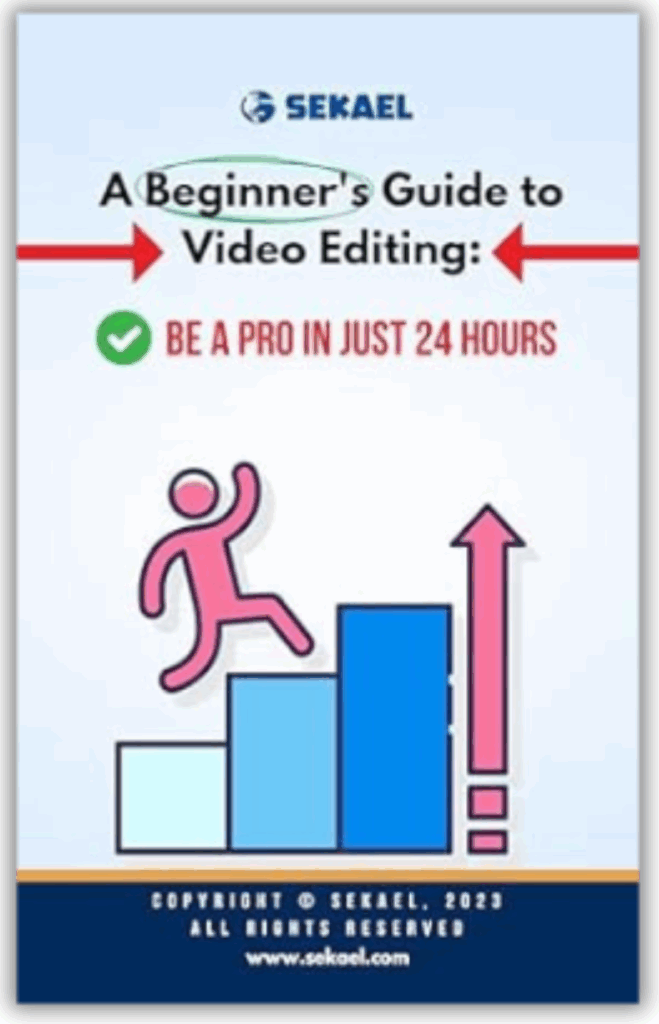






















 Effective communication is crucial for successful business negotiations. In this blog, we have discussed the significance of clarity and brevity in ensuring messages are understood and acted upon efficiently.
Effective communication is crucial for successful business negotiations. In this blog, we have discussed the significance of clarity and brevity in ensuring messages are understood and acted upon efficiently. We encourage you to apply the strategies discussed in this blog to enhance your negotiation skills and communication effectiveness. By practicing clarity and brevity, you will be better prepared to handle the complexities of business negotiations and achieve successful outcomes.
We encourage you to apply the strategies discussed in this blog to enhance your negotiation skills and communication effectiveness. By practicing clarity and brevity, you will be better prepared to handle the complexities of business negotiations and achieve successful outcomes.

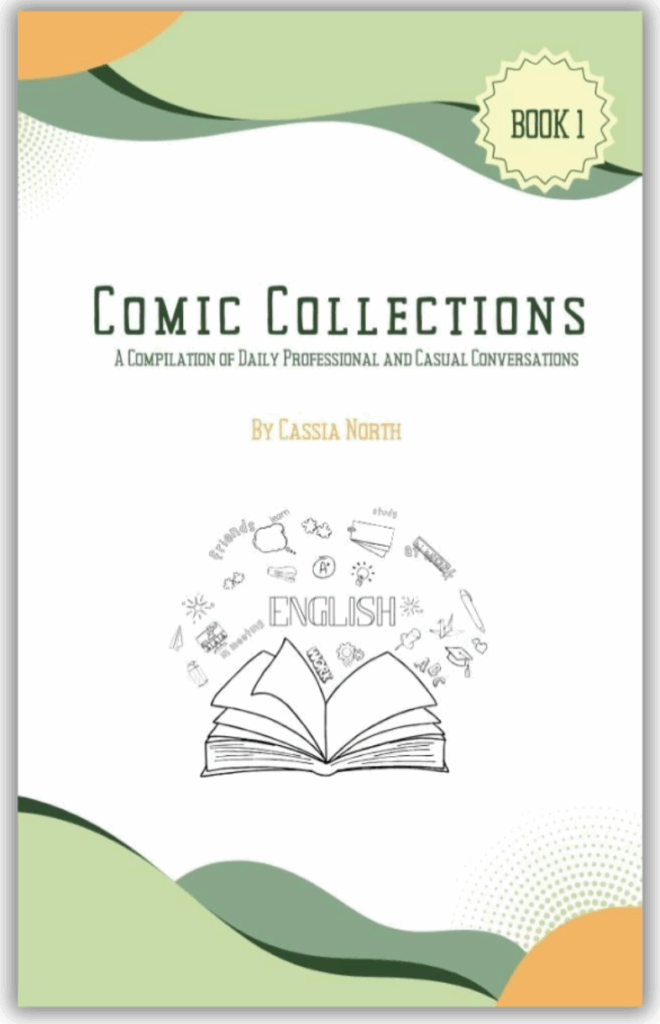


































 In summary, growing a YouTube channel requires a multifaceted approach. By creating compelling content tailored to your niche, collaborating with other YouTubers to expand your reach, and building a loyal subscriber base through engagement and strategic CTAs, you can achieve sustained success. Implementing these strategies will not only help you stand out in a crowded platform but also foster a dedicated community around your content. As YouTube continues to evolve, staying adaptable and responsive to new trends and viewer preferences will be crucial. Embrace these growth strategies, and watch your channel flourish in the ever-changing digital landscape.
In summary, growing a YouTube channel requires a multifaceted approach. By creating compelling content tailored to your niche, collaborating with other YouTubers to expand your reach, and building a loyal subscriber base through engagement and strategic CTAs, you can achieve sustained success. Implementing these strategies will not only help you stand out in a crowded platform but also foster a dedicated community around your content. As YouTube continues to evolve, staying adaptable and responsive to new trends and viewer preferences will be crucial. Embrace these growth strategies, and watch your channel flourish in the ever-changing digital landscape.
 In the fast-paced world of business, effective communication is key to success. Visual aids, such as presentations, infographics, and charts, play a valuable role in conveying complicated information succinctly and clearly. They not only enhance understanding but also engage the audience, making your message more memorable. However, the impact of these visual aids can be significantly diminished by poor grammar. Errors in grammar can distract the audience, undermine credibility, and obscure the intended message.
In the fast-paced world of business, effective communication is key to success. Visual aids, such as presentations, infographics, and charts, play a valuable role in conveying complicated information succinctly and clearly. They not only enhance understanding but also engage the audience, making your message more memorable. However, the impact of these visual aids can be significantly diminished by poor grammar. Errors in grammar can distract the audience, undermine credibility, and obscure the intended message. This blog will go through the important aspects of grammar in visual aids for business communication. We will discuss common grammar mistakes, key grammar rules, and practical tips for structuring text in various types of visual aids. Additionally, we will highlight tools and resources that can help you perfect your grammar and provide real-world examples to describe the importance of these principles. Let’s dive into the world of grammar for effective visual aids and elevate your business communication to the next level.
This blog will go through the important aspects of grammar in visual aids for business communication. We will discuss common grammar mistakes, key grammar rules, and practical tips for structuring text in various types of visual aids. Additionally, we will highlight tools and resources that can help you perfect your grammar and provide real-world examples to describe the importance of these principles. Let’s dive into the world of grammar for effective visual aids and elevate your business communication to the next level.
 In business presentations, the use of jargon can be a double-edged sword. While it can streamline communication among industry insiders, it often poses significant barriers to understanding for broader audiences. This section explores what jargon is and the negative impacts it can have on your presentations.
In business presentations, the use of jargon can be a double-edged sword. While it can streamline communication among industry insiders, it often poses significant barriers to understanding for broader audiences. This section explores what jargon is and the negative impacts it can have on your presentations. Avoiding jargon is essential for making your business presentations clear and accessible. Here are three practical techniques to help you identify and replace jargon, use analogies and examples, and seek feedback to ensure your language is inclusive and comprehensible.
Avoiding jargon is essential for making your business presentations clear and accessible. Here are three practical techniques to help you identify and replace jargon, use analogies and examples, and seek feedback to ensure your language is inclusive and comprehensible. Punctuation marks are essential for clarifying the meaning of sentences and ensuring that your visual aids are easily readable. Misplaced or missing punctuation can alter the intended meaning and confuse the audience.
Punctuation marks are essential for clarifying the meaning of sentences and ensuring that your visual aids are easily readable. Misplaced or missing punctuation can alter the intended meaning and confuse the audience. Maintaining consistent tense and tone throughout your visual aids is vital for clarity and coherence. Shifts in tense and tone can confuse the audience and disrupt the flow of information.
Maintaining consistent tense and tone throughout your visual aids is vital for clarity and coherence. Shifts in tense and tone can confuse the audience and disrupt the flow of information. When we say parallelism, it involves using the same grammatical structure for similar elements within a list or series. This technique enhances readability and ensures that your visual aids are logically organized.
When we say parallelism, it involves using the same grammatical structure for similar elements within a list or series. This technique enhances readability and ensures that your visual aids are logically organized.


 Bullet points and numbering are powerful tools for breaking down complex information into digestible pieces. They enhance clarity and make it easier for the audience to follow your points.
Bullet points and numbering are powerful tools for breaking down complex information into digestible pieces. They enhance clarity and make it easier for the audience to follow your points.








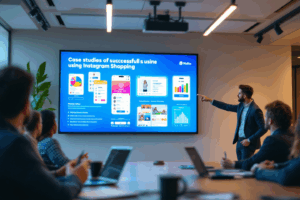









 In summary, effective visual aids rely on correct grammar to enhance clarity, professionalism, and engagement. Key points include maintaining subject-verb agreement, proper punctuation, consistent tense and tone, and parallelism. Additionally, structuring text with clear headings, white space, and bullet points, while avoiding common pitfalls, is crucial. Utilizing grammar tools, style guides, and training resources can further improve your presentations. By prioritizing grammar, you can elevate your business communication, ensuring your visual aids are impactful and professional. Implement these practices to achieve clearer, more effective, and credible business presentations.
In summary, effective visual aids rely on correct grammar to enhance clarity, professionalism, and engagement. Key points include maintaining subject-verb agreement, proper punctuation, consistent tense and tone, and parallelism. Additionally, structuring text with clear headings, white space, and bullet points, while avoiding common pitfalls, is crucial. Utilizing grammar tools, style guides, and training resources can further improve your presentations. By prioritizing grammar, you can elevate your business communication, ensuring your visual aids are impactful and professional. Implement these practices to achieve clearer, more effective, and credible business presentations.











































 When giving a business presentation, how you communicate is essential for getting your ideas across well. Whether you are pitching a new idea, presenting quarterly results, or leading a team meeting, the words you choose can significantly influence your audience’s understanding and engagement. One common pitfall that presenters often encounter is the use of jargon – specialized terms that, while familiar within a particular industry, can alienate or confuse a broader audience.
When giving a business presentation, how you communicate is essential for getting your ideas across well. Whether you are pitching a new idea, presenting quarterly results, or leading a team meeting, the words you choose can significantly influence your audience’s understanding and engagement. One common pitfall that presenters often encounter is the use of jargon – specialized terms that, while familiar within a particular industry, can alienate or confuse a broader audience. In this topic, we will dig deeper into how important word choice is in business presentations, delve into the impact of jargon, and provide practical strategies for selecting the right words and avoiding jargon. By mastering these elements, you can elevate your presentations and communicate your ideas more effectively, ensuring your message resonates with any audience.
In this topic, we will dig deeper into how important word choice is in business presentations, delve into the impact of jargon, and provide practical strategies for selecting the right words and avoiding jargon. By mastering these elements, you can elevate your presentations and communicate your ideas more effectively, ensuring your message resonates with any audience.




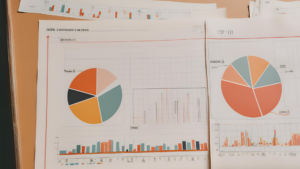















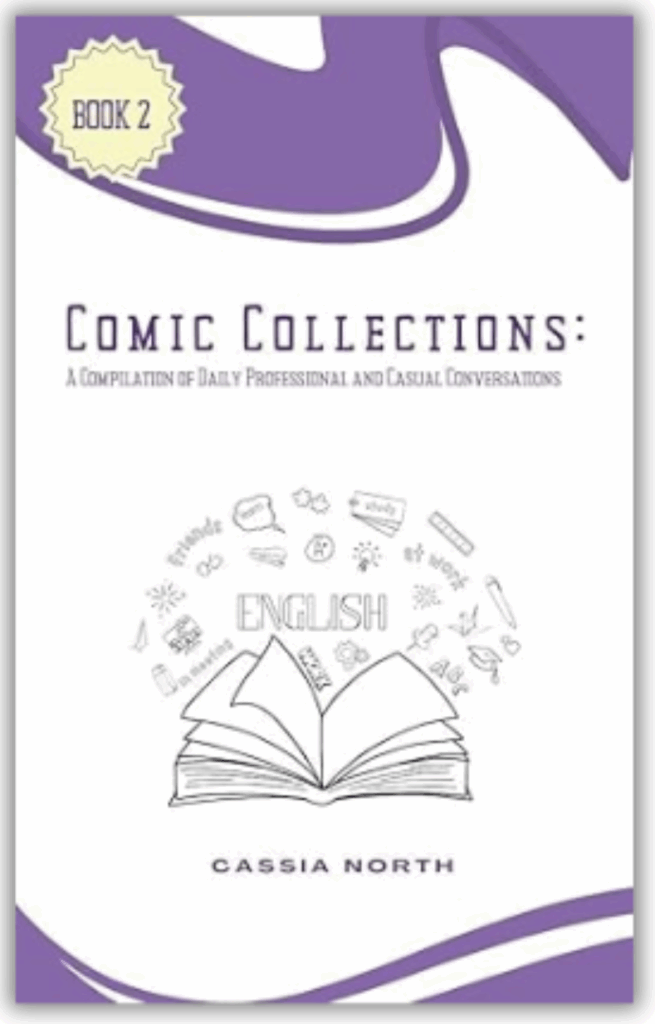



 Finding the right keywords is like laying the foundation for your YouTube SEO strategy. This highlights keyword research as the crucial first step for optimizing your videos. Like magic words, including the right keywords in your content unlocks greater discoverability for your videos, attracting a wider audience. This uses a metaphor to emphasize the positive impact of keywords.
Finding the right keywords is like laying the foundation for your YouTube SEO strategy. This highlights keyword research as the crucial first step for optimizing your videos. Like magic words, including the right keywords in your content unlocks greater discoverability for your videos, attracting a wider audience. This uses a metaphor to emphasize the positive impact of keywords. In the next section, we will delve into how YouTube’s algorithm works and what factors influence video ranking.
In the next section, we will delve into how YouTube’s algorithm works and what factors influence video ranking. Understanding how YouTube’s algorithm works is essential for optimizing your videos and enhancing their discoverability. The algorithm is a complex system designed to serve users the most relevant and engaging content based on various factors. Here’s a closer look at how it operates:
Understanding how YouTube’s algorithm works is essential for optimizing your videos and enhancing their discoverability. The algorithm is a complex system designed to serve users the most relevant and engaging content based on various factors. Here’s a closer look at how it operates:





 The video title is one of those first things potential viewers see. A well-crafted title can significantly improve your video’s click-through rate (CTR). Below are the tips for creative titles:
The video title is one of those first things potential viewers see. A well-crafted title can significantly improve your video’s click-through rate (CTR). Below are the tips for creative titles: Your video description provides additional context and helps the alogortihm of YouTube’s understand what your video is all about. A well-written description can also guide viewers on what to expect, potentially increasing watch time and engagement. Here’s how to optimize your descriptions:
Your video description provides additional context and helps the alogortihm of YouTube’s understand what your video is all about. A well-written description can also guide viewers on what to expect, potentially increasing watch time and engagement. Here’s how to optimize your descriptions:
 Tags are an essential component of YouTube SEO, helping the platform understand the context and content of your video. Properly utilized tags can improve your video’s searchability and ensure it reaches the right audience.
Tags are an essential component of YouTube SEO, helping the platform understand the context and content of your video. Properly utilized tags can improve your video’s searchability and ensure it reaches the right audience. Did you know that tags provide YouTube with additional information about your video, complementing your title and description. They help categorize your content and make it easier for the algorithm to recommend your video in related searches and suggested videos.
Did you know that tags provide YouTube with additional information about your video, complementing your title and description. They help categorize your content and make it easier for the algorithm to recommend your video in related searches and suggested videos. Using irrelevant tags might seem like a way to attract more viewers, but it can backfire. Misleading tags can confuse the algorithm and lead to lower rankings. Chhoose tags that are directly relevant to your video content.
Using irrelevant tags might seem like a way to attract more viewers, but it can backfire. Misleading tags can confuse the algorithm and lead to lower rankings. Chhoose tags that are directly relevant to your video content.  Thumbnails and Click-Through Rate (CTR) are crucial factors that influence a video’s performance on YouTube. An engaging thumbnail can attract more clicks, while a high CTR indicates to YouTube that your video is relevant and interesting to viewers.
Thumbnails and Click-Through Rate (CTR) are crucial factors that influence a video’s performance on YouTube. An engaging thumbnail can attract more clicks, while a high CTR indicates to YouTube that your video is relevant and interesting to viewers. Thumbnails are the first visual impression potential viewers get of your video. An effective thumbnail should:
Thumbnails are the first visual impression potential viewers get of your video. An effective thumbnail should: CTR measures how many people who click on your video in percentage after seeing its thumbnail and title. Improving your CTR can significantly boost your video’s performance. Here’s how:
CTR measures how many people who click on your video in percentage after seeing its thumbnail and title. Improving your CTR can significantly boost your video’s performance. Here’s how:








 In the world of business, effective communication is the cornerstone of success. Whether it’s persuading potential investors, engaging colleagues during a meeting, or delivering a pitch to potential clients, the clarity of your message can significantly impact your professional image and outcomes. One crucial aspect of ensuring clear communication is the mastery of grammar, specifically subject-verb agreement and tense consistency.
In the world of business, effective communication is the cornerstone of success. Whether it’s persuading potential investors, engaging colleagues during a meeting, or delivering a pitch to potential clients, the clarity of your message can significantly impact your professional image and outcomes. One crucial aspect of ensuring clear communication is the mastery of grammar, specifically subject-verb agreement and tense consistency. Tense consistency refers to maintaining the same grammatical tense throughout a piece of writing or speech. When presenting, it’s vital to keep your tenses consistent, as shifting tenses can confuse the audience about when actions are happening. It ensures the timeline remains clear and logical, reinforcing the professionalism of the communication.
Tense consistency refers to maintaining the same grammatical tense throughout a piece of writing or speech. When presenting, it’s vital to keep your tenses consistent, as shifting tenses can confuse the audience about when actions are happening. It ensures the timeline remains clear and logical, reinforcing the professionalism of the communication. Subject-verb agreement is one of the key components of English grammar, ensuring that the verb in a sentence matches its subject in both number and person. This alignment is crucial for the clarity and correctness of any communication, especially in business environments where precision in language reflects professionalism and competence.
Subject-verb agreement is one of the key components of English grammar, ensuring that the verb in a sentence matches its subject in both number and person. This alignment is crucial for the clarity and correctness of any communication, especially in business environments where precision in language reflects professionalism and competence.


 In business presentations, the effective use of tenses not only clarifies the timeline of events but also helps in setting the tone and engaging the audience. Mastery over tense usage is integral to delivering clear and professional presentations that leave a lasting impression.
In business presentations, the effective use of tenses not only clarifies the timeline of events but also helps in setting the tone and engaging the audience. Mastery over tense usage is integral to delivering clear and professional presentations that leave a lasting impression.






 Create a list of sentences that include errors in subject-verb agreement and tense usage. Practice rewriting them correctly. This can be done as part of a daily writing exercise or incorporated into team training sessions.
Create a list of sentences that include errors in subject-verb agreement and tense usage. Practice rewriting them correctly. This can be done as part of a daily writing exercise or incorporated into team training sessions. Organize regular peer review sessions where team members present short talks or written content. Peers can provide feedback specifically on grammar and tense usage, helping each other identify and correct common mistakes.
Organize regular peer review sessions where team members present short talks or written content. Peers can provide feedback specifically on grammar and tense usage, helping each other identify and correct common mistakes. Employ grammar checking tools as part of the drafting process for presentations and documents. These tools can catch inconsistencies and errors that may be overlooked during manual editing.
Employ grammar checking tools as part of the drafting process for presentations and documents. These tools can catch inconsistencies and errors that may be overlooked during manual editing. Conduct role-playing exercises where participants prepare and deliver brief presentations. Focus the feedback on how well they integrate subject-verb agreement and tense consistency, providing concrete examples and corrections.
Conduct role-playing exercises where participants prepare and deliver brief presentations. Focus the feedback on how well they integrate subject-verb agreement and tense consistency, providing concrete examples and corrections.







 Throughout this blog, we have talked about the essential grammatical principles of subject-verb agreement and tense consistency, underlining their significance in the context of business presentations. By understanding and correctly applying these rules, professionals can communicate their ideas more clearly and effectively, enhancing the overall impact of their presentations.
Throughout this blog, we have talked about the essential grammatical principles of subject-verb agreement and tense consistency, underlining their significance in the context of business presentations. By understanding and correctly applying these rules, professionals can communicate their ideas more clearly and effectively, enhancing the overall impact of their presentations. The discussion on tense consistency highlighted how the careful selection of tenses can provide clarity about the timeline of events discussed during presentations. We reviewed how to choose the appropriate tense to reflect past, present, or future activities, reinforcing the narrative’s coherence. Real-life examples illustrated the impact of these grammatical elements on the professionalism and clarity of business communications.
The discussion on tense consistency highlighted how the careful selection of tenses can provide clarity about the timeline of events discussed during presentations. We reviewed how to choose the appropriate tense to reflect past, present, or future activities, reinforcing the narrative’s coherence. Real-life examples illustrated the impact of these grammatical elements on the professionalism and clarity of business communications. Moreover, we delved into advanced tools and techniques for enhancing grammatical skills, from online resources like Grammarly and the Purdue OWL to daily practices such as reading high-quality literature and engaging in regular writing exercises. These tools not only aid in correcting errors but also in understanding the underlying rules, which is crucial for long-term improvement.
Moreover, we delved into advanced tools and techniques for enhancing grammatical skills, from online resources like Grammarly and the Purdue OWL to daily practices such as reading high-quality literature and engaging in regular writing exercises. These tools not only aid in correcting errors but also in understanding the underlying rules, which is crucial for long-term improvement.

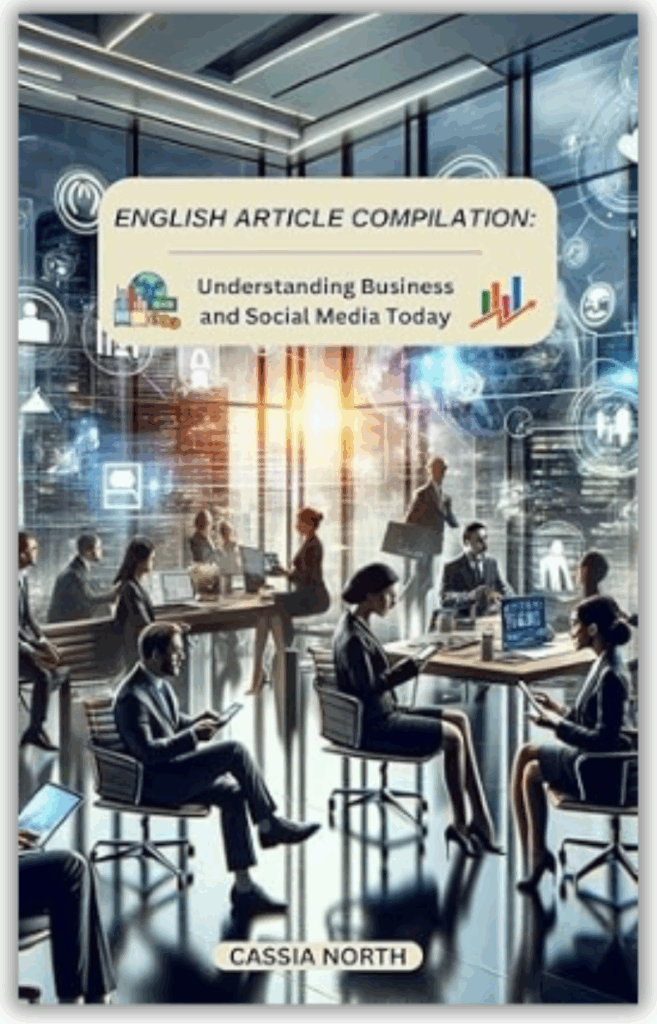






 In summary, conversion tracking is essential for understanding the impact of your Facebook advertising efforts. By properly configuring the Facebook pixel, defining custom conversions, and leveraging Aggregated Event Measurement, marketers can gain a clearer view of user actions and align their strategies to maximize campaign performance and business impact.
In summary, conversion tracking is essential for understanding the impact of your Facebook advertising efforts. By properly configuring the Facebook pixel, defining custom conversions, and leveraging Aggregated Event Measurement, marketers can gain a clearer view of user actions and align their strategies to maximize campaign performance and business impact.
 Facebook’s Attribution tool lets you see the big picture of how various marketing efforts on different platforms contribute to sales or other desired actions. Whether it’s paid advertising, organic social media, email marketing, or direct website traffic, these multi-channel insights enable you to see the combined impact of your marketing efforts.
Facebook’s Attribution tool lets you see the big picture of how various marketing efforts on different platforms contribute to sales or other desired actions. Whether it’s paid advertising, organic social media, email marketing, or direct website traffic, these multi-channel insights enable you to see the combined impact of your marketing efforts. In today’s multi-device world, users often interact with your brand on desktops, smartphones, and tablets before making a purchase. Facebook Attribution’s cross-device reporting helps you trace the customer journey across all devices, providing a more comprehensive view of user behavior and uncovering conversion opportunities.
In today’s multi-device world, users often interact with your brand on desktops, smartphones, and tablets before making a purchase. Facebook Attribution’s cross-device reporting helps you trace the customer journey across all devices, providing a more comprehensive view of user behavior and uncovering conversion opportunities. By effectively utilizing the Facebook Attribution tool, you can have a grasp of a comprehensive understanding of your campaigns’ performance, refine your marketing strategy, and attribute conversions more accurately across channels and devices.
By effectively utilizing the Facebook Attribution tool, you can have a grasp of a comprehensive understanding of your campaigns’ performance, refine your marketing strategy, and attribute conversions more accurately across channels and devices.

 Mastering Facebook Analytics and conversion tracking is essential for any marketer aiming to attribute sales and leads back to their efforts. By utilizing tools like Facebook Attribution, pixel tracking, and detailed funnel analysis, by leveraging data and understanding customer journeys, marketers can refine their campaigns for maximum impact. Following the best practices outlined in this guide will help you maximize ROI, refine your marketing strategies, and align your campaigns with your business objectives. While the process may seem complex, the rewards of correctly attributing conversions to your Facebook marketing efforts are invaluable, ensuring that every dollar spent is delivering measurable value to your bottom line.
Mastering Facebook Analytics and conversion tracking is essential for any marketer aiming to attribute sales and leads back to their efforts. By utilizing tools like Facebook Attribution, pixel tracking, and detailed funnel analysis, by leveraging data and understanding customer journeys, marketers can refine their campaigns for maximum impact. Following the best practices outlined in this guide will help you maximize ROI, refine your marketing strategies, and align your campaigns with your business objectives. While the process may seem complex, the rewards of correctly attributing conversions to your Facebook marketing efforts are invaluable, ensuring that every dollar spent is delivering measurable value to your bottom line.

 In the world of business, the ability to communicate clearly and effectively is paramount. This is especially true when it comes to delivering business presentations, where the clarity of your message can significantly influence your professional credibility and the level of engagement of your audience. The mechanics and punctuation of your writing play a crucial role in conveying your ideas with precision and ensuring that your message is not only delivered but also received with the intended understanding.
In the world of business, the ability to communicate clearly and effectively is paramount. This is especially true when it comes to delivering business presentations, where the clarity of your message can significantly influence your professional credibility and the level of engagement of your audience. The mechanics and punctuation of your writing play a crucial role in conveying your ideas with precision and ensuring that your message is not only delivered but also received with the intended understanding. First, we will discuss the fundamentals of writing mechanics, including why they are important and how neglecting them can lead to misunderstandings or diminish the impact of your presentations. Next, we will delve into the nuances of punctuation, providing you with specific examples of how each punctuation mark should be used to enhance clarity and reader engagement. Additionally, we will discuss the intertwined roles of grammar and mechanics in creating compelling business content.
First, we will discuss the fundamentals of writing mechanics, including why they are important and how neglecting them can lead to misunderstandings or diminish the impact of your presentations. Next, we will delve into the nuances of punctuation, providing you with specific examples of how each punctuation mark should be used to enhance clarity and reader engagement. Additionally, we will discuss the intertwined roles of grammar and mechanics in creating compelling business content. In any form of business communication, the mechanics of writing—encompassing spelling, capitalization, punctuation, and typography—serve as the foundation for clear and effective expression. Understanding and applying these mechanics correctly is not merely a matter of linguistic correctness but a critical element in ensuring that the intended message is conveyed accurately and professionally.
In any form of business communication, the mechanics of writing—encompassing spelling, capitalization, punctuation, and typography—serve as the foundation for clear and effective expression. Understanding and applying these mechanics correctly is not merely a matter of linguistic correctness but a critical element in ensuring that the intended message is conveyed accurately and professionally. Writing mechanics refer to the rules and conventions that govern how we construct sentences and paragraphs in written language. This includes everything from the correct use of capitals and punctuation to the spelling of words and the spacing between sentences. In the context of business presentations, these mechanics are indispensable because they help maintain the structure and integrity of the information being presented. Proper use of mechanics enhances the readability of content and aids in the delivery of a clear, precise message. It also reflects the presenter’s attention to detail and respect for the audience, which can significantly influence the audience’s perception and reception of the content.
Writing mechanics refer to the rules and conventions that govern how we construct sentences and paragraphs in written language. This includes everything from the correct use of capitals and punctuation to the spelling of words and the spacing between sentences. In the context of business presentations, these mechanics are indispensable because they help maintain the structure and integrity of the information being presented. Proper use of mechanics enhances the readability of content and aids in the delivery of a clear, precise message. It also reflects the presenter’s attention to detail and respect for the audience, which can significantly influence the audience’s perception and reception of the content. One prevalent mechanical error in business writing is the misuse of capitalization, such as overcapitalizing job titles and general terms, which can distract readers and make them appear unprofessional. Punctuation errors, including misplaced commas and incorrect use of semicolons, can alter the meaning of sentences and lead to confusion.
One prevalent mechanical error in business writing is the misuse of capitalization, such as overcapitalizing job titles and general terms, which can distract readers and make them appear unprofessional. Punctuation errors, including misplaced commas and incorrect use of semicolons, can alter the meaning of sentences and lead to confusion.  Misplaced or missing apostrophes in contractions and possessives are another common issue that can reduce the credibility of the presentation. Furthermore, inconsistencies in typography—such as varying fonts, inappropriate use of bold or italics, and inconsistent headline casing—can disrupt the visual flow and professional appearance of business documents.
Misplaced or missing apostrophes in contractions and possessives are another common issue that can reduce the credibility of the presentation. Furthermore, inconsistencies in typography—such as varying fonts, inappropriate use of bold or italics, and inconsistent headline casing—can disrupt the visual flow and professional appearance of business documents. The mechanics of writing directly impact the readability of a presentation. For instance, correct punctuation can improve sentence flow and make the text easier to follow, thereby enhancing audience comprehension. Effective use of mechanics also ensures that each point is clearly defined and stands out, which is essential in maintaining the audience’s focus and interest throughout the presentation.
The mechanics of writing directly impact the readability of a presentation. For instance, correct punctuation can improve sentence flow and make the text easier to follow, thereby enhancing audience comprehension. Effective use of mechanics also ensures that each point is clearly defined and stands out, which is essential in maintaining the audience’s focus and interest throughout the presentation. Punctuation is an indispensable tool in business writing, serving not just to comply with grammatical rules but to enhance the clarity and impact of your presentations. Correct punctuation ensures that your message is not only understood but also received in the manner you intended. This section covers essential punctuation marks—the period, comma, semicolon, colon, and question mark—and provides specific examples and tips to help you utilize them effectively in your business communications.
Punctuation is an indispensable tool in business writing, serving not just to comply with grammatical rules but to enhance the clarity and impact of your presentations. Correct punctuation ensures that your message is not only understood but also received in the manner you intended. This section covers essential punctuation marks—the period, comma, semicolon, colon, and question mark—and provides specific examples and tips to help you utilize them effectively in your business communications. By mastering these punctuation marks, you can significantly enhance the clarity and professionalism of your business presentations. Understanding how to use punctuation effectively helps you communicate your message with precision and engage your audience more effectively. In the next section, we will explore the role of grammar in business presentations, further building on the foundation of effective communication skills.
By mastering these punctuation marks, you can significantly enhance the clarity and professionalism of your business presentations. Understanding how to use punctuation effectively helps you communicate your message with precision and engage your audience more effectively. In the next section, we will explore the role of grammar in business presentations, further building on the foundation of effective communication skills.


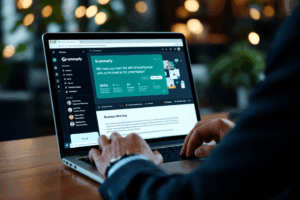




 Throughout this discussion on “Mechanics & Punctuation for Clarity,” we have explored the critical importance of mastering writing mechanics, punctuation, and grammar in crafting effective business presentations. The ability to communicate with precision and professionalism is indispensable in the business world, where every presentation can influence decisions, shape perceptions, and drive corporate strategies. Clear writing with proper mechanics and punctuation makes your message understandable and shows you care about your audience.
Throughout this discussion on “Mechanics & Punctuation for Clarity,” we have explored the critical importance of mastering writing mechanics, punctuation, and grammar in crafting effective business presentations. The ability to communicate with precision and professionalism is indispensable in the business world, where every presentation can influence decisions, shape perceptions, and drive corporate strategies. Clear writing with proper mechanics and punctuation makes your message understandable and shows you care about your audience. However, mastering these elements of language is not a one-time effort but a continuous journey. Ongoing learning and regular practice are keys to maintaining and enhancing your skills. Engage with current best practices, utilize tools and resources designed to aid in writing and proofreading, and seek feedback on your presentations to refine your approach.
However, mastering these elements of language is not a one-time effort but a continuous journey. Ongoing learning and regular practice are keys to maintaining and enhancing your skills. Engage with current best practices, utilize tools and resources designed to aid in writing and proofreading, and seek feedback on your presentations to refine your approach.
 By committing to these practices, you can ensure that your business communications are not only error-free but also impactful and effective. Elevate your professional presentations from good to exceptional, and watch as clearer communication opens doors to new opportunities and successes in your career.
By committing to these practices, you can ensure that your business communications are not only error-free but also impactful and effective. Elevate your professional presentations from good to exceptional, and watch as clearer communication opens doors to new opportunities and successes in your career.
